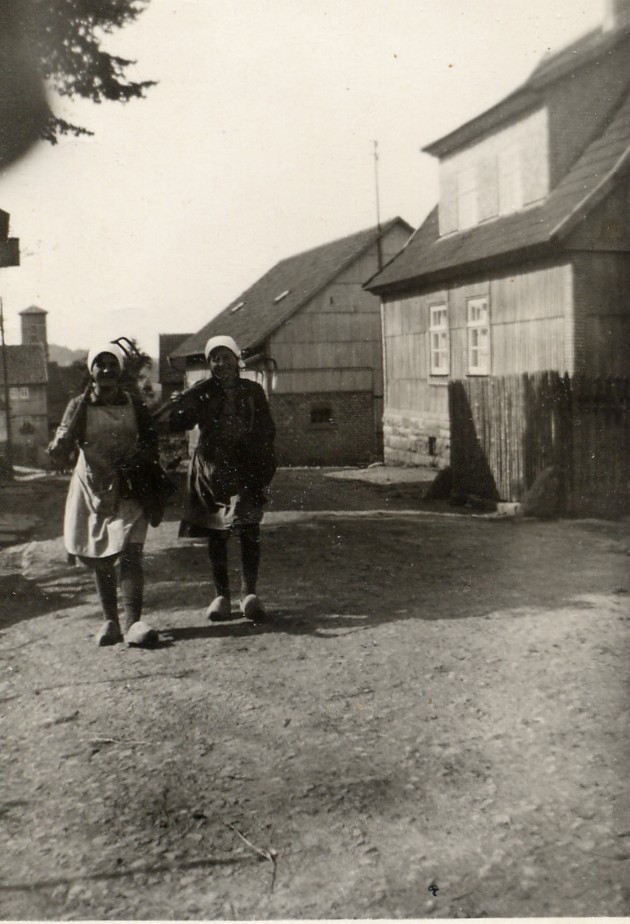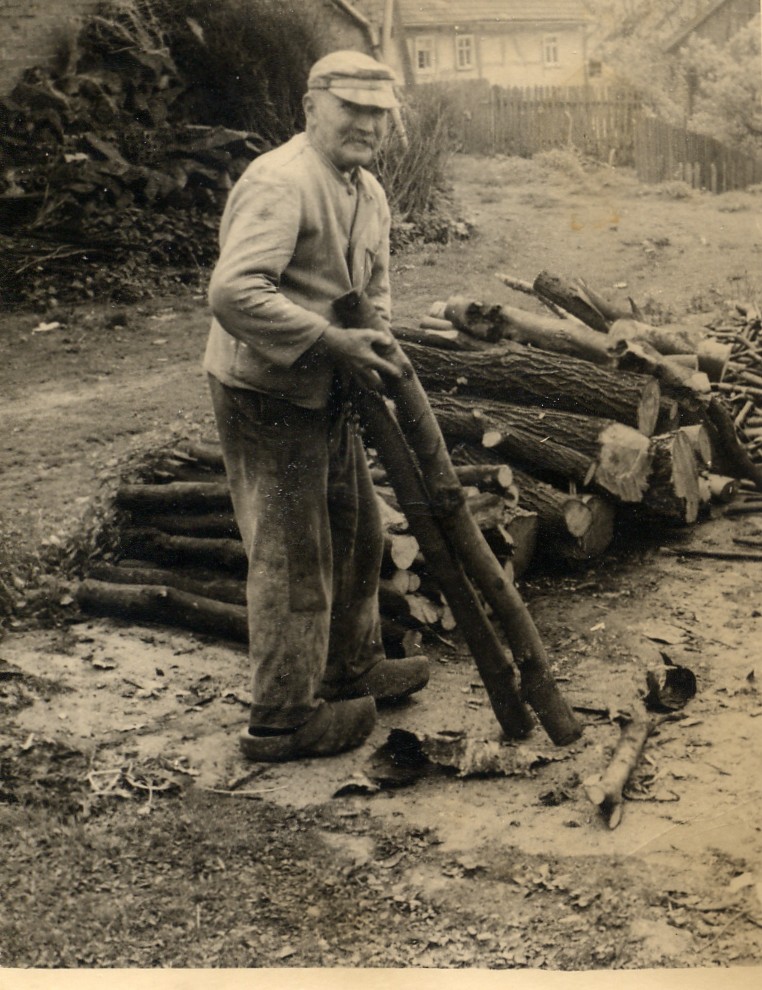OBERKALBACH, HESSEN, GERMANY
Village of My Berthold & Ullrich Ancestors

WOODEN SHOES

My cousin Hans Juergen in June 1999 shows the giant clamp grandfather Johannes Berthold used to hold the wood while making his family's wooden shoes.


Liese and Gretel on their
way to work in the fields.
Johannes Berthold
preparing firewood.
Even in the mid-1960's, Oberkalbachers wore wooden shoes to go to school, work in the fields and gardens, to clean their barns, chop wood, etc. When I visited my grandparents the last time in 1949 before leaving for the U.S., villagers still wore wooden shoes as part of their every-day outdoor attire. Sunday was the only day my mother, as a girl in the early 1900's, got to wear leather shoes. And that was only to go to church every other week, because she had to share those leather shoes with her sister Eva, 1 1/2 years younger.
At the instep of the wooden shoe, the wood was cut low and a piece of leather was attached to come part way up the instep to hold the shoe on and to soften the contact on the top of the foot. Inside the wooden shoe was worn a kind of slipper-sock, home-knitted of dark blue yarn with a white tip at the toes and a piece of thin leather sewn to the bottom. These were called Fuerwess. This is a word in dialect. "Fuer" (vorne in hoch deutsch) means "front". The "wess" (weiss in hoch deutsch)
means "white". The wooden shoes were left on the doorstep and only the slipper socks were worn in the house.
Walking in wooden shoes was noisy. It was not possible to walk down the street without being heard, even though there was no pavement. Walking down an Oberkalbach street was a hazardous experience in itself because it entailed dodging the cow pies left by cows used as work animals to pull farmwagons. In winter, snow would get into the shoes and compact, making it an annoying necessity to stop and clean out the shoe often.
The Fansterhanse sisters, chatting about the old days a few years ago, told of the time they went to the "spinning room" as young girls, where they learned how to spin and knit, and left their shoes, as usual, outside. When they were done and came out to put them on, the mischievous neighborhood boys had tinkled into them!
There were shoemakers in the village, but my grandfather made the shoes for all his family himself. Apparently he never learned how to make them fit well. Even in their advanced years, the Berthold girls joked about how uncomfortable the shoes had been. And several members of the Fansterhanse house developed bunions!

Copyright 2000-2008 by Sue Foster. Please contact me for permission to copy. I would love to know wy you are interested in this information :-)